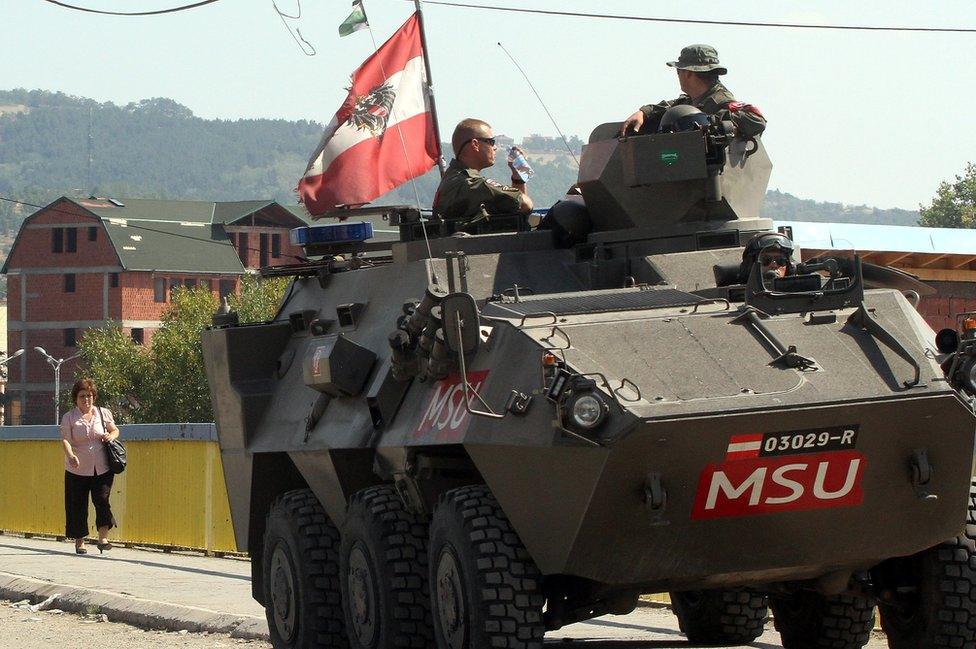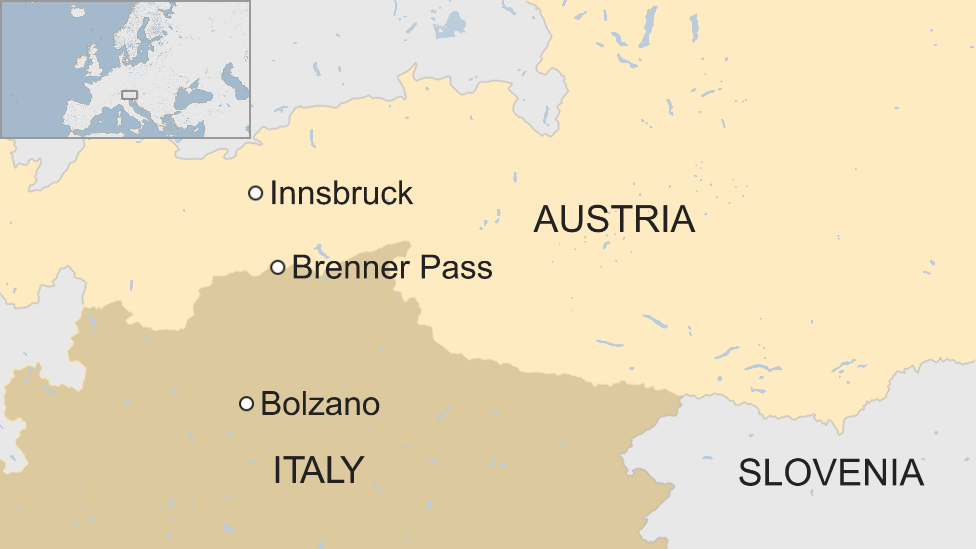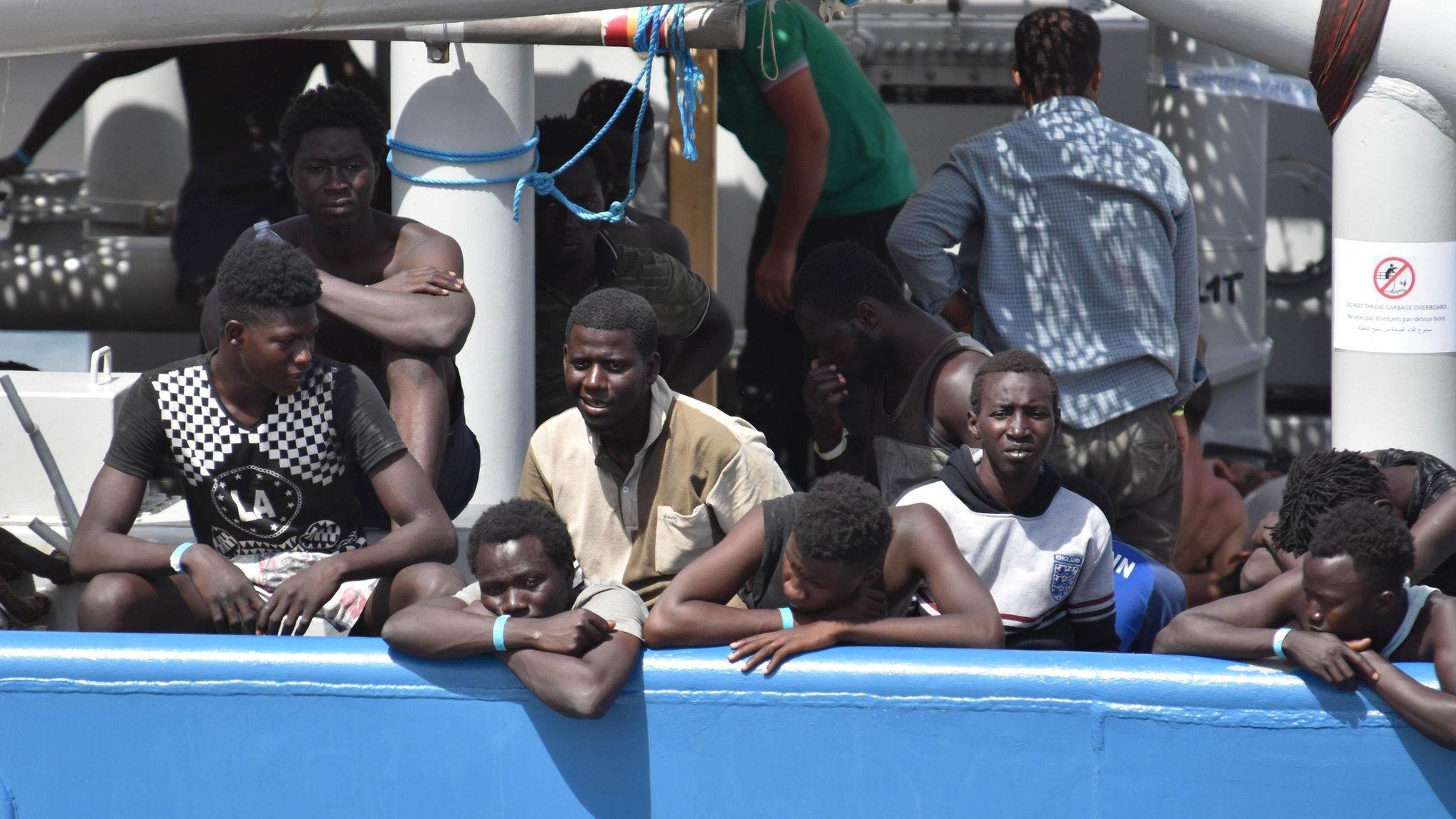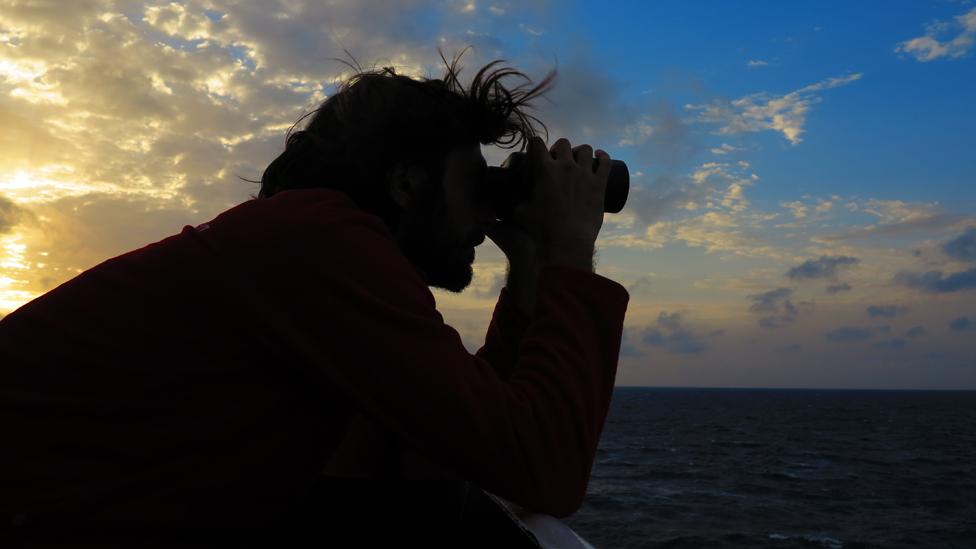Italy-Austria tension over border troops at Brenner Pass
- Published

Armoured vehicles like this could soon impose border controls at the Brenner Pass
Italy has summoned Austria's ambassador after the government in Vienna announced it was ready to deploy border troops to block any migrant influx.
Austrian Defence Minister Hans Peter Doskozil told Kronen Zeitung daily that troops could go to the Brenner Pass.
He said four Pandur armoured personnel carriers had been sent to the Tyrol region and 750 troops were on standby.
Austria has border checks with Hungary and Slovenia. But elsewhere it adheres to the EU open borders system.
Mr Doskozil said a military deployment at the busy Alpine pass, on the Italian border, would be "indispensable if the influx into Italy [across the Mediterranean] does not diminish".
Later Italy's foreign ministry said it had summoned Austrian Ambassador Rene Pollitzer "following the Austrian government's statement about deploying troops to the Brenner (pass)".
People-smuggling gangs have been exploiting the violence and chaos in Libya. The shortest crossing from Libya to Italy is only about 460km (290 miles).
Nearly 85,000 migrants and refugees arrived in Italy in the first half of this year, across the Mediterranean. The UN refugee agency UNHCR says that is about 20% more than in the first half of 2016.
Brenner 'stable'
The Italian governor of South Tyrol, Arno Kompatscher, sought to defuse tensions. He said Austria had issued similar warnings about the border previously, and the situation there remained "quiet and stable".
Austria was gearing up for a general election in October, Mr Kompatscher noted. The anti-immigration Austrian Freedom Party (FPÖ) is expected to poll strongly.
Italy has warned that the current scale of migrant arrivals is unsustainable and that it could even close its ports and impound aid agencies' rescue ships.

The Brenner Pass is now seen as a potential migration hotspot, as the influx to Italy so far this year is higher than last year.
The European Commission has announced an action plan, external to help Italy cope with the Central Mediterranean influx. It calls on Italy to establish a code of conduct for aid agencies' rescue ships.
The plan calls on EU ministers to approve:
€46m (£40m; $52m) to help Libya beef up border controls and tackle the smuggling gangs
€35m more for Italy to step up processing of migrants and returns of failed asylum seekers
Step up work with African countries, including Mali and Niger, to stem the flow of migrants.
Amnesty International dismissed the plan. "Outsourcing more and more responsibility for search and rescue to the Libyan Coastguard is irresponsible and ineffective and has led to more deaths at sea," it said.
"In allowing the Libyan coastguard to intercept boats and return them to Libya, the EU is showing blatant disregard for the lives of refugees and migrants."
The EU's Schengen system - free movement across most European borders - was overwhelmed by an influx of migrants and refugees in 2015.
They reached Central Europe via the Balkans - and most sought asylum in Germany. Since then, tighter border controls in the Balkans have reduced the numbers heading north from Greece.
Most of the influx to Austria was via Hungary. Many of those who came by train or on foot were refugees from Syria, Iraq and other conflict zones.
So far 101,000 migrants have entered Europe in 2017 via the Mediterranean and according to the latest figures, external, 2,247 people have died or are missing at sea.
A note on terminology: The BBC uses the term migrant to refer to all people on the move who have yet to complete the legal process of claiming asylum. This group includes people fleeing war-torn countries such as Syria, who are likely to be granted refugee status, as well as people who are seeking jobs and better lives, who governments are likely to rule are economic migrants.
- Published2 July 2017

- Published4 October 2016
